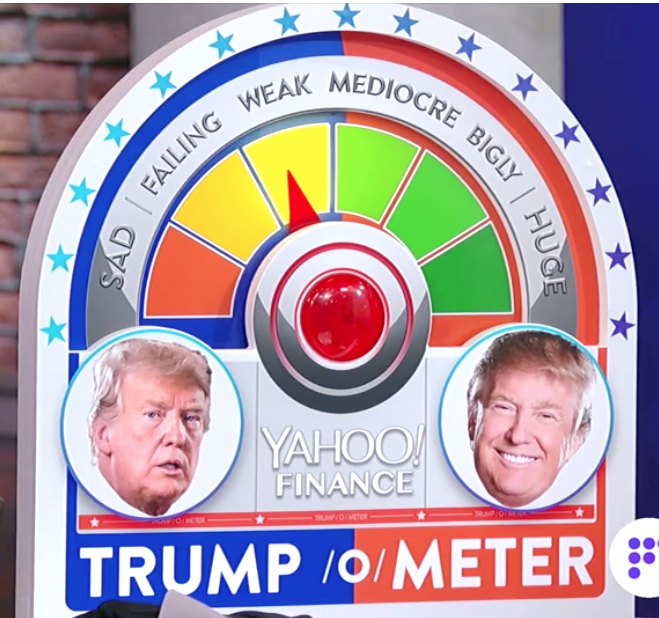This week in Trumponomics: Trump is about to get his interest rate cut
There’s a new Trump-o-meter in town, but our weekly Trumponomics discussion revolves around a familiar theme: the possible economic damage caused by President Trump’s trade policies.
Federal Reserve Chair Jerome Powell signaled in congressional testimony this week that the central bank is almost certain to cut interest rates later this month. “Uncertainties around trade tensions and concerns about the strength of the global economy continue to weigh on the U.S. economic outlook,” Powell said. During recent weeks, he indicated, the case for a rate cut has “strengthened.” That’s about as declarative as a Fed chair can be, and it means interest rate cuts are coming.
Trump should be cheering. He’s been hectoring the Fed to cut rates for months, breaking protocol by putting political pressure on the central bank chief. Lower rates, Trump presumes, will stimulate economic growth by making it cheaper to borrow. That might help Trump’s reelection effort. Powell insists there’s a strong economic case for cutting rates, and he’s not simply doing Trump’s bidding. Most investors believe him.
Stocks hit new record highs on Powell’s dovish outlook. But something feels wrong. The Fed is likely to cuts rates because it’s worried about the economy. That’s bad news, not good. And part of the reason for cutting rates is to countermand the negative effects of the president’s own policies. This is bizzaro world, which is why this week’s Trump-o-meter reads WEAK, the third-lowest rating.

While still in the midst of a trade “truce” with China, developments are worrisome. Trump is complaining that China isn’t yet stepping up purchases of American agricultural products, as promised. China recently said it would impose sanctions on U.S. defense contractors selling arms to Taiwan, which would be a first. Meanwhile, tariffs imposed by both countries are hurting U.S. farmers and raising costs for businesses. Powell calls trade tensions “cross-currents” and says they’re beginning to drain business confidence and have a negative impact on economic data.
Rate cuts and other central-bank measures helped stocks recover following the recession that ended in 2009. But that happened as the economy was coming out of a recession. It’s a different story when the economy is heading into a recession. The last time the Fed switched from raising rates to cutting them was in September of 2007. The S&P 500 stock index hit a record high one month later—then went into a deep swoon. It didn’t regain 2007 levels until 2013.
A recession doesn’t seem imminent at the moment, which is why economists say Fed rate cuts now would be an insurance policy or a booster shot. But if the economy needs a booster shot, then it’s a bad time for Trump to be practicing unsafe trade. If Jerome Powell is worried, maybe the rest of us should be, too.
Rick Newman is the author of four books, including “Rebounders: How Winners Pivot from Setback to Success.” Follow him on Twitter: @rickjnewman
Confidential tip line: rickjnewman@yahoo.com. Encrypted communication available. Click here to get Rick’s stories by email.
Read more:
How Joe Biden avoided Hillary Clinton’s Wall Street problem
The Democrats need better villains
The Trump trade war is far from over
Everybody running for president is rich
Elizabeth Warren’s best and worst economic ideas
Medicare for all won’t work. This might
Read the latest financial and business news from Yahoo Finance
Follow Yahoo Finance on Twitter, Facebook, Instagram, Flipboard, SmartNews, LinkedIn, YouTube, and reddit.

